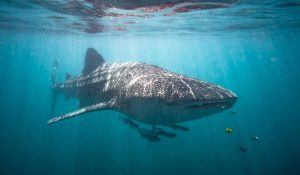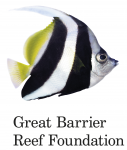Models to Manage Tourism
Identifying and Managing Tourism Using Models
Understanding and monitoring optimal ecological, social, and economic conditions at a reef site enhances sustainable tourism objectives. Both the optimal number of tourists and the number of tourists that represents a threshold when conditions (e.g., tourist experiences, environmental conditions) have declined is not a specific/single number, but rather a range of numbers that vary based on circumstances (e.g., location, season, durability of the resource). The acceptable ranges and thresholds for these conditions will vary site to site and over time shifting with the changing health and condition of the reef and reef communities.
Negative impacts from tourism can include:
- Ecological: Environmental degradation of physical resources (water, soil, or air) or disturbance of ecological features such as wildlife, corals, coastal vegetation, and dunes
- Social: Social crowding, conflict, and loss of core community values and amenities
- Economic: Infrastructure over-utilization, reduced business profitability and capability to reinvest in continual improvement, and a shift in tourism markets from ecotourists to mass tourists who have lower environmental sensitivity and preparedness to pay for sustainable management
Key takeaways from the Solution Exchange on sustainable tourism and recordings of presentations by experts are below. Asterisk (*) sentences are additional takeaways identified by additional experts after the event.
Key Takeaways
- Engage stakeholders across sectors early and often to work toward effectively managing tourist numbers. Achieving sustainable tourism goals requires an alignment of values from the different sectors, which is extremely challenging. Working together from the beginning, instead of bringing stakeholders in later in the conversation, is critical for buy-in.
- Tourism management models work best in conjunction with other supporting interventions such as education to influence tourist behaviors, responsive restoration of impacted areas, infrastructure improvements that reduce visitor contact with the resource, and, when necessary, enforcement.
- Identify tourist hotspots and reduce impacts where possible. Many tourist destinations have hotspots where visitation and use are intensified. Intensified pressure can be reduced through an array of methods (e.g., reducing contact between the tourist and the sensitive areas, developing and marketing lower significance sacrificial tourist hotspots and closing access to the higher significance sites, or developing substitution experiences at other locations).
- Reduce tourist pressure at specific sites by appropriately pricing the experience. Another method to reduce tourist pressure is through dynamic pricing – a pricing strategy in which businesses set flexible prices based on current market demands. The more something costs the more it is appreciated, and the higher the proportion of respectful tourists make up the mix. *Managers need to be mindful that high prices can lead to inequities and should also include differential pricing (e.g., local prices, off-peak prices, fee-free days), so underserved people within communities are not priced out.
- Encourage communication between local developers/planners and marine managers to increase the sustainability of tourism. Greater communication between jurisdictions and authorities helps build shared understanding that bridges gaps between differing objectives.
- Develop a cooperative action plan instead of a Visitor Use Management Plan. A comprehensive Visitor Use Management Plan can take years to develop; it can result in stakeholder fatigue and agencies can get a reputation for being too bureaucratic and not nimble enough to address immediate needs and/or changing circumstances. One mitigation method is to develop a cooperative action plan. This 1-year plan is a non-binding agreement that is updated every couple of years.
- *Introduce an integrated monitoring and adaptive management system. When monitoring reveals trends and relationships, and when this is shared among stakeholders, there is a basis for shared understanding and trust, which in turn permits the introduction of adaptive management. Adaptive management is a collection of responses prepared and representing varying levels of intervention to reflect varying levels of an impact or issue. Each indicator being monitored is given a suite of potential adaptive management responses, and a group of stakeholders jointly select one when monitoring suggests it is needed. If the response works, it can be scaled back and even removed.
Spotlight on Ningaloo
How can we adaptively manage tourist numbers to reduce impacts at our site?

Photo © Joel Johnsson
Hugging the western edge of Australia, Ningaloo Reef is one of the longest fringing coral reefs in the world. The Ningaloo Coast was inscribed on the UNESCO World Heritage list in 2011. It is an iconic attraction for domestic and international travelers visiting Western Australia (WA), with a thriving tourism industry based around the reef and coastline, which adds approximately AU$110 million to the local economy each year. Tourism at Ningaloo is seasonal, the region swells from about 3,000 permanent residents to hosting up to 20,000 visitors at any one time during the peak winter months. This influx stresses the ecological, social, and economic systems. Ningaloo’s stakeholders were particularly interested in learning about potential management frameworks for operationalizing assessments so they can adaptively respond to tourist numbers and impacts. The COVID-19 pandemic impacted Ningaloo in unforeseen ways. Ningaloo tourism increased during the pandemic and the demographic of tourists changed. The WA state closed its borders so no international tourists or Australians from other states could enter. The pandemic also made it difficult for WA residents to leave the state and return. In doing this, WA avoided the worst impacts of COVID-19, with relatively few cases occurring in the state. Consequently, there were fewer out-of-state tourists and WA residents who would normally travel overseas or to other parts of the country vacationed locally. Despite retaining the already high levels of visitation, the demographic of visitors to Ningaloo changed, resulting in increased rates of recreational fishing and lower utilization of local tours.
Presentations
Watch the presentations by Solution Exchange experts in English or French to learn more:
Visitor Capacities based on Social Impact – Doug Whittaker, Confluence Research and Consulting
Coastal Visitor Use and Impact Monitoring – Abby Sisneros-Kid, Utah State University
Sustainable Solutions to Contemporary Challenges in Managing Human Recreational Use of Coral Reef Ecosystems – Mark Orams, Auckland University of Technology
Carrying Capacity – Sally Harman, Great Barrier Reef Marine Park Authority
Evaluation de la capacité de charge basée sur l'impact social – Doug Whittaker, Confluence Research and Consulting
Suivi des usages et impact des visiteurs sur le littoral – Abby Sisneros-Kid, Utah State University
Solutions durables aux défis contemporains de gestion des usages récréatifs des écosystèmes de récifs coralliens – Mark Orams, Auckland University of Technology
Échange de solutions - Capacité de charge – Sally Harman, Great Barrier Reef Marine Park Authority
Advancing Sustainable Tourism Strategies
The Solution Exchange was intended to inspire thinking, bring together the Resilient Reefs Initiative managers and partners for knowledge exchange and learning, and help catalyze action on the ground. Toward that end, here is the potential next step that was identified during discussion around tourism numbers and their management:
Engage experts in developing studies that integrate social, ecological, managerial, and economic assessments of tourist numbers and behaviors, and their associated impacts at sites.
There is currently no “gold standard” example of an integrated model to manage tourist numbers in the reef space. For RRI sites to accomplish this holistic approach effectively, they will need to design something new, with the support of social, ecological, and economic experts. Watch this space as RRI managers at Ningaloo have begun scoping a local integrated study.
 This content was developed in collaboration with Great Barrier Reef Foundation.
This content was developed in collaboration with Great Barrier Reef Foundation. Resources
Visitor Use Management Framework: A Guide to Providing Sustainable Outdoor Recreation
Monitoring Guidebook: Evaluating Effectiveness of Visitor Use Management
GBRMPA Tourism Management Action Strategy
Tourism Optimisation Management Model
Webinar on Reef Support, a tool designed to help MPA managers collect and sell marine park fees
What is Wrong with the Concept of carrying Capacity? In Challenges in Tourism Research
Indicators of Sustainable Development for Tourism Destinations A Guidebook
Visitor Management, In Protected Area Governance and Management
